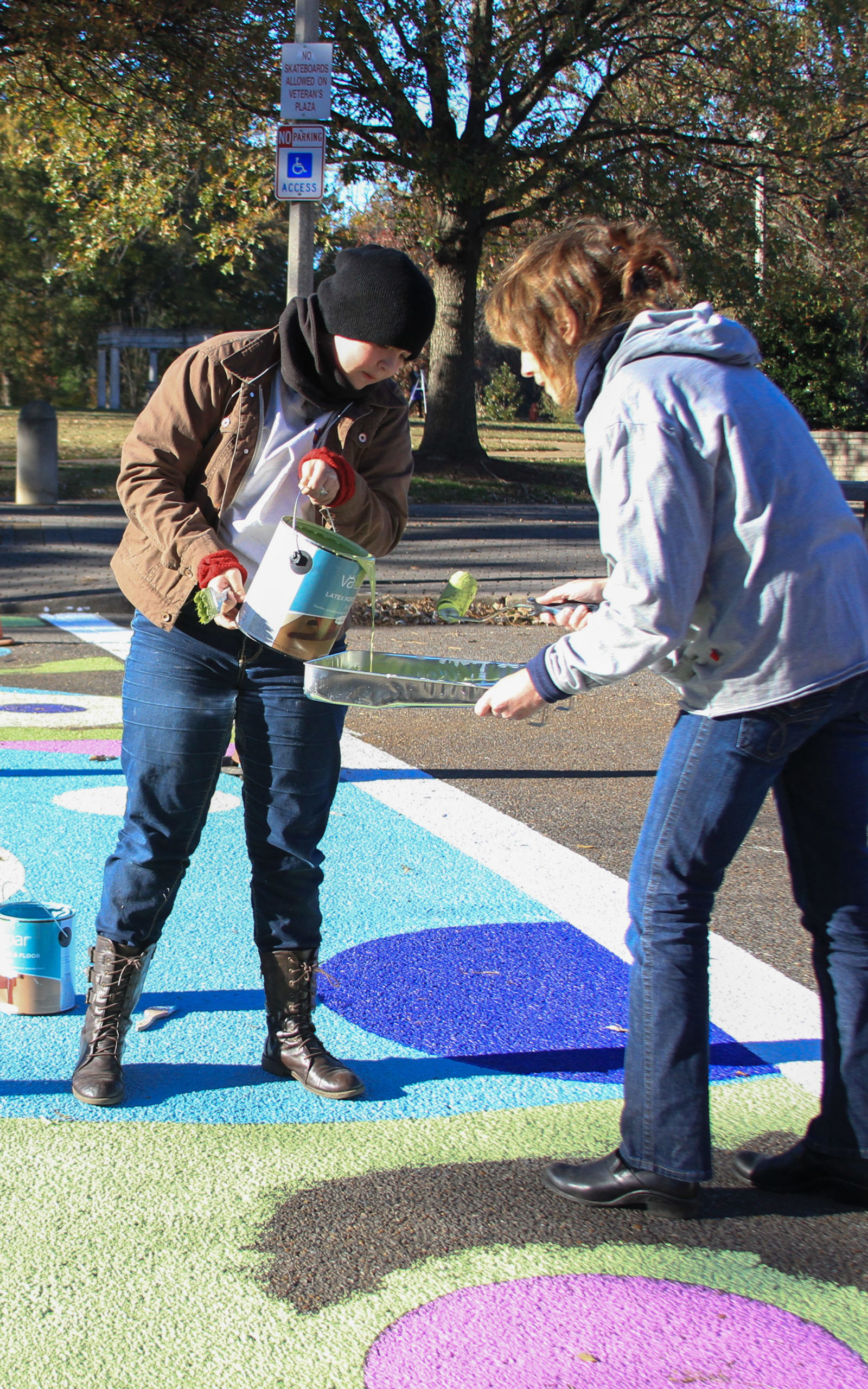
Crosswalk Safety Project
Memphis, TN
This project was a partnership with Overton Park Conservancy, a park program in midtown Memphis that was interested in adding pedestrian walkways in multiple locations in the park. Primarily invested in producing crosswalks to ensure pedestrian safety and connecting green spaces across thoroughfares, the park communicated with affiliates to see if there was a way to create crosswalks with community support. After initial discussions, the community suggested the park explore artistic applications for the crosswalks, feeling that this could add a unique component to the park that reflected the spirit of the neighborhood. Because the city had not implemented artistic crosswalks before, new standards would need to be developed based on the city engineer core’s parameters, requiring an understanding of city development codes, particularly in regard to the regulations required of official crosswalks.
- Goals
1. To create sidewalks in Overton park that foster walkability of the area and improve safety measures for pedestrians. 2. To create sidewalks in Overton Park that explore artistic applications of the community and engage the community in a citizen-inclusive design process. - Service Learning & Community Engagement Pedagogy
Students were encouraged to participate in the process to learn about public art and design intervention in community engaged project work. The project taught students about the citizen-inclusive design model that I implement in my research and practice working in the field with community members. This model applies an open, participatory process for community engagement in design intervention and action projects (arts-based community development projects) and supports active participation, fostering stronger community engagement to help empower participants as stakeholders throughout the entire process. Most notably, the method introduces designers as strategists and facilitators, while community members, take on the unique role of participant and maker in the intervention and monitoring phases. This particular strategy emphasizes the community’s ability and responsibility to actively contribute to the implementation phase of the design intervention and action projects that are planned for their communities.
Students learned how to collaborate on a team and work with one another to implement a large-scale design intervention project. They learned how to work with citizens in the process and assess community assets and resources for design intervention planning and implementation processes. They learned how to integrate these ideas into design concepts and assess the impact of the work upon completion. - Student/Participant Experience
Students and participants actively worked together in the creation of the community design intervention. - Community Experience
The project began with designers engaging in research methods—attending neighborhood association meetings with stakeholders, attending partner meetings with Overton Park Conservancy, reviewing crosswalk art in other cities, researching materials for implementation, and reviewing the core engineer’s city parameters and regulations set forth for public projects.
The designers created a range of concepts for consideration. Stakeholders identified areas for customization within the designs, and ultimately directed final designs and implementation plans for execution.
Teams of community members and students were established for the production of the work. Designers lead meetings on how to execute this type of project to scale including techniques for mapping out designs, discussions of appropriate use of materials, and possible challenges such as closing down the street during busy park times. Community members were also briefed on methods for preparing surfaces, painting on pavement, and protecting final work for longevity.
Community members and students installed three unique crosswalks over the course of three days, with one day prior needed for purchasing materials. Four teams were created; Team 1 was in charge of purchasing and distributing materials. Team 2, 3, and 4 were responsible for preparing, painting, and sealing a crosswalk. Each team included about 5 participants.
The project also included a management plan that required touchups to be done every 3-6 months. The management plan was adopted by the primary partner on the project, Overton Park Conservancy. - Faculty/Staff Experience
This project is one of many community engagement projects that have helped shape and have been shaped by my research methods in the field. Each project contributes to my personal and professional development by not only allowing me a venue to address and consider tangible social, economic, and/or cultural influence and change in my community via creative intervention, but also allows me to share this work beyond my community (reaching beyond regional boundaries) and beyond my discipline to teach and/or contribute to other sources and collections of knowledge and ideas. - Institutional Priority
This project aligned with Memphis College of Art’s initiative to advance community-based project work (and instruction) within the institution and actively participate in the communities of Memphis outside of the institution. It also fostered collaborative partnerships and cross-disciplinary pursuits within and beyond the institution, which was highly encouraged and valued. - Future Goals
I’m currently an Assistant Professor at East Carolina University and working on a community engagement project in Uptown Greenville, NC with partner, Pitt County Arts Council. This project has been developed through the Engagement Outreach Scholars Academy at ECU: https://rede.ecu.edu/engagement/programs-and-initiatives/ eosa/2019-eosa-scholars/. Participants of the project include community members from NC Civil, TRUNA, PCAC, Uptown Greenville, ECU and others as interested and engaged in the project.
This project implements and expands on my research which considers how design interventions can improve and/or expand on the economic, cultural, and community development of communities by contributing to the community’s sense of place through the addition of activity-programming, cultural-historical context, social-spatial interactions, etc.
The project employs my citizen-inclusive, participatory model (mentioned in this case study) for designing and implementing a design intervention in Uptown Greenville. The research will measure the affected change and impact of a citizen-inclusive design intervention implemented in the Uptown Greenville community. The impact analysis will measure the affected change of 3 outcomes. The design intervention’s ability to (1) improve and/or expand on the economic, cultural, and community development in Uptown Greenville (2) establish and/or expand on Greenville’s sense of place in the Uptown community and (3) reflect and/or bring in/engage/embrace Greenville’s diverse, multicultural audience


